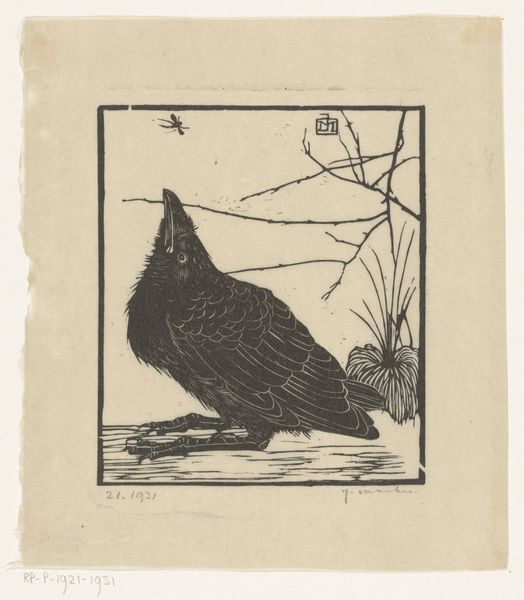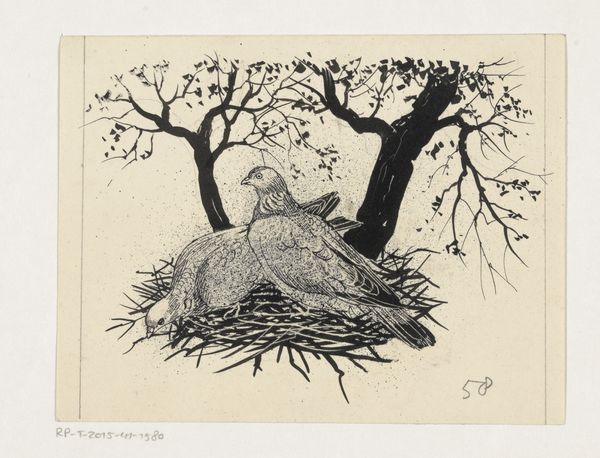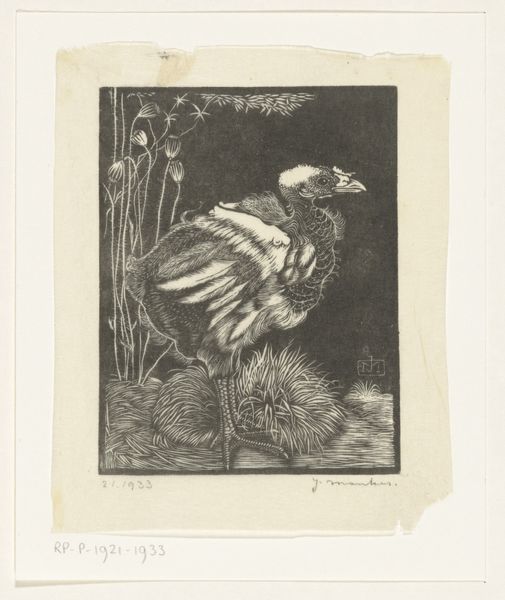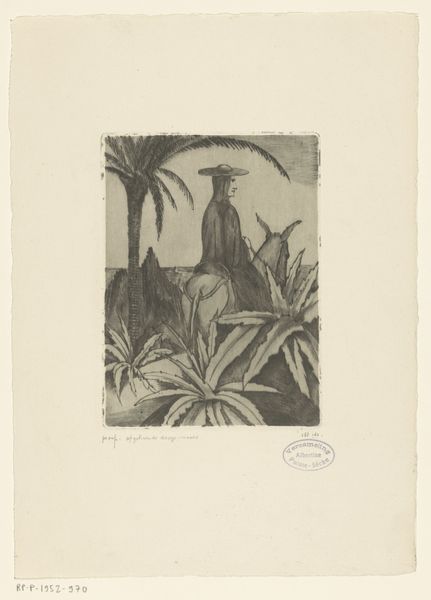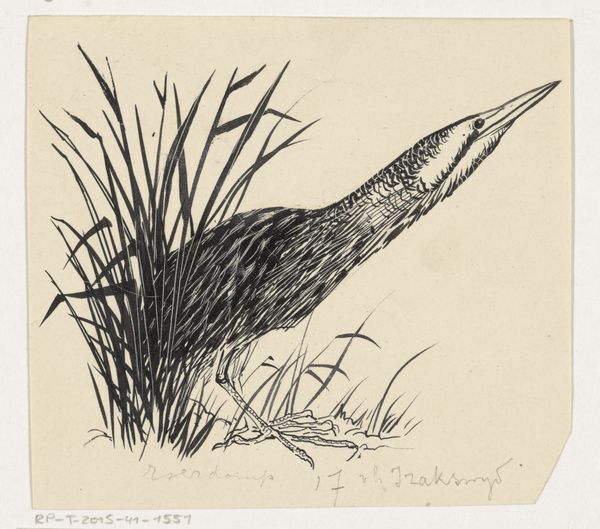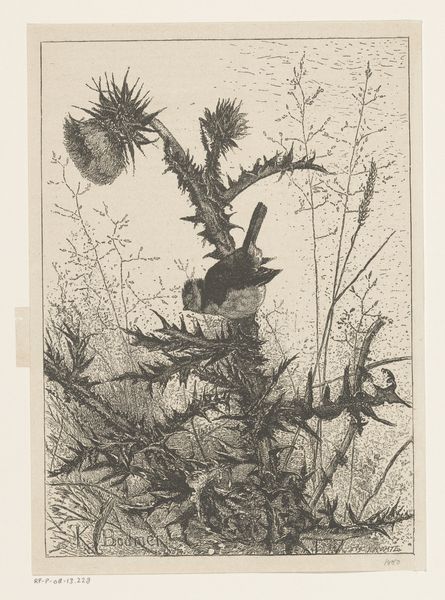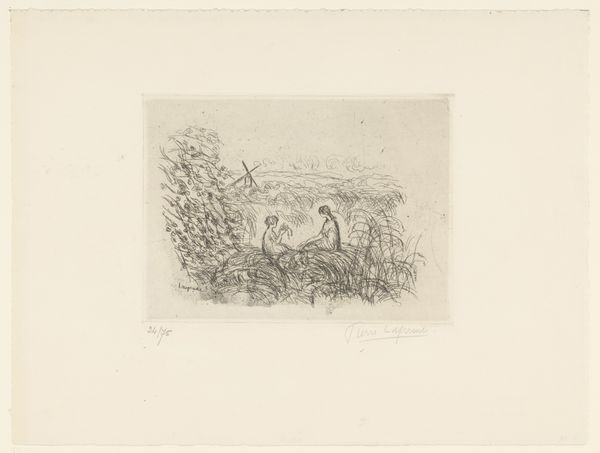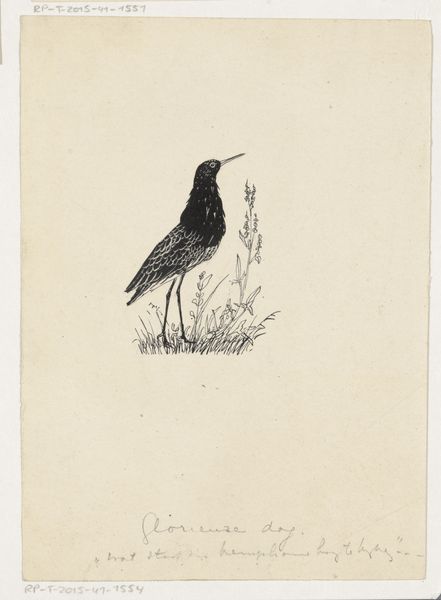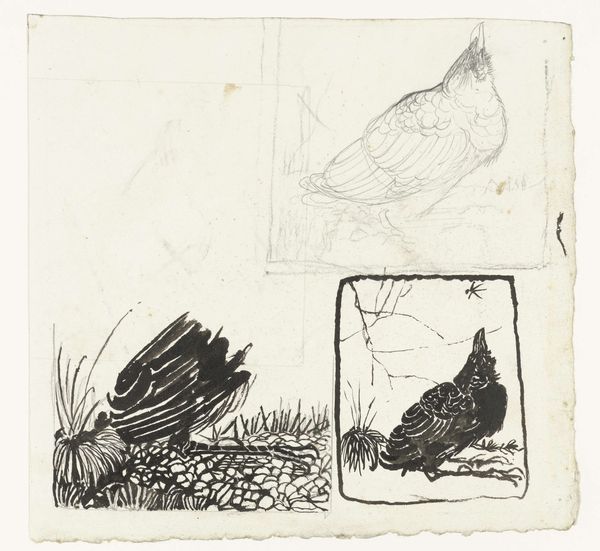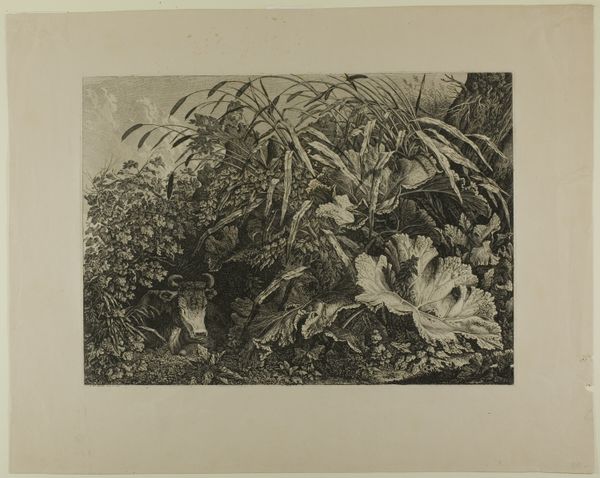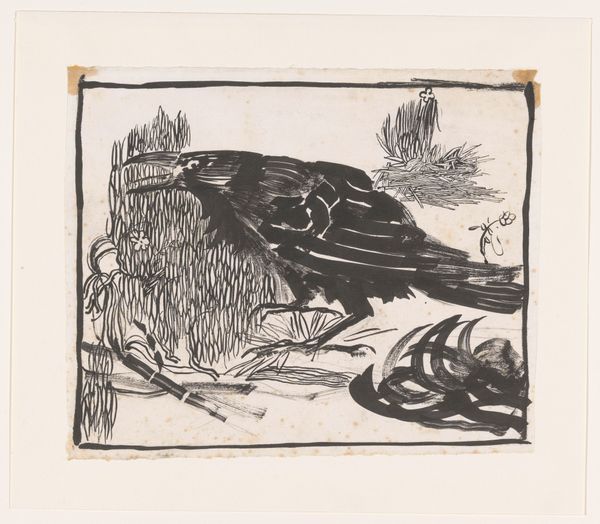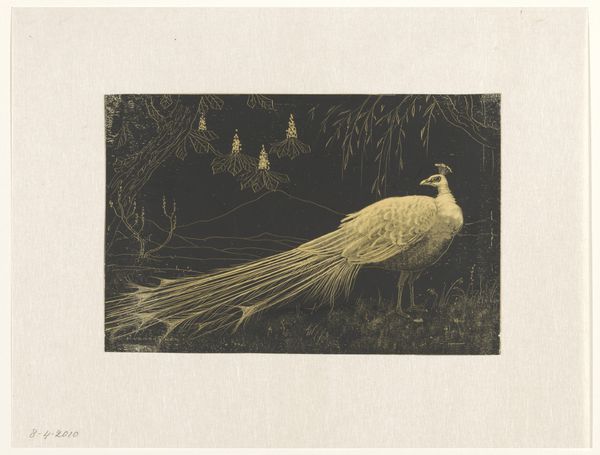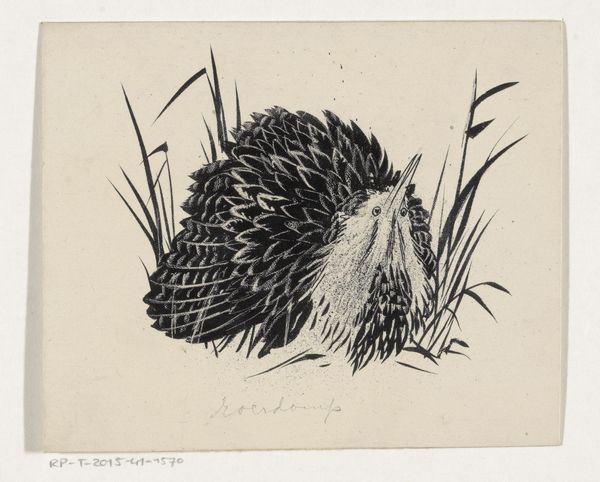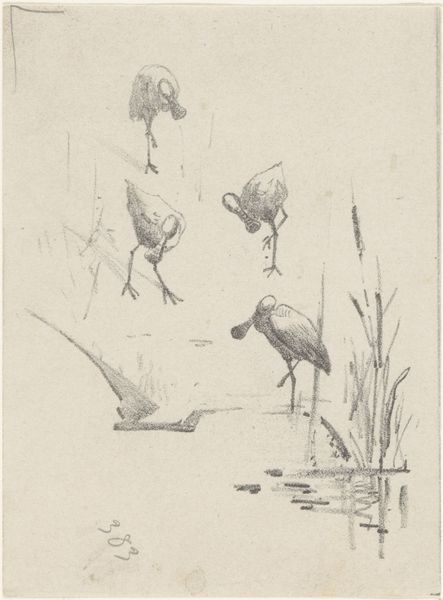
#
imaginative character sketch
#
quirky illustration
#
childish illustration
#
cartoon sketch
#
personal sketchbook
#
ink drawing experimentation
#
sketchbook drawing
#
watercolour illustration
#
cartoon carciture
#
sketchbook art
Dimensions: height 120 mm, width 128 mm
Copyright: Rijks Museum: Open Domain
Curator: Here we have “Eenden, vogels en haan bij een bevroren plas” which roughly translates to “Ducks, birds and rooster by a frozen pool”, thought to be made between 1892 and 1940 by Henri Verstijnen. Editor: What strikes me is how sparse it is. Just enough visual information to create the scene, a real masterclass in simplifying form. The balance of the heavy black rooster in the foreground against the light background creates an intriguing visual tension. Curator: It’s interesting you say that, considering the date range. This piece exists within a fascinating socio-political context in Europe, when artists were reckoning with tradition against emerging modernities. Could Verstijnen be using these stark forms as commentary on class structures, where some figures – like the rooster – command attention? Editor: That's an interesting point. However, consider the formal interplay between positive and negative space. The solidity of the rooster, rendered almost entirely in black, is in sharp contrast to the delicate, almost ethereal depiction of the trees and reeds behind him. Curator: I see that, but I'm compelled to ask what it might mean to centre the rooster. Historically, roosters are often potent symbols of masculinity. How does that symbolism shift in the context of Verstijnen’s Holland and potentially shifting gender roles? Are we meant to read this confidence as critique, or celebration? Editor: Again, consider the stark contrast between the rooster's solid form and the fragmented reflections in the water; the way the artist manipulates value creates a compelling sense of depth. Perhaps these waterfowl signify nature reduced to its basic form. Curator: True, though that doesn’t diminish the wider possibilities within Verstijnen’s commentary on representation itself. The conscious use of these symbols provides a lens through which to interpret not just what's depicted, but what's omitted, as an artist living through a complex history. Editor: Perhaps, and I do respect your insightful observations about the piece’s socio-political implications. For me though, the beauty resides within the work’s aesthetic and technical construction.
Comments
No comments
Be the first to comment and join the conversation on the ultimate creative platform.
